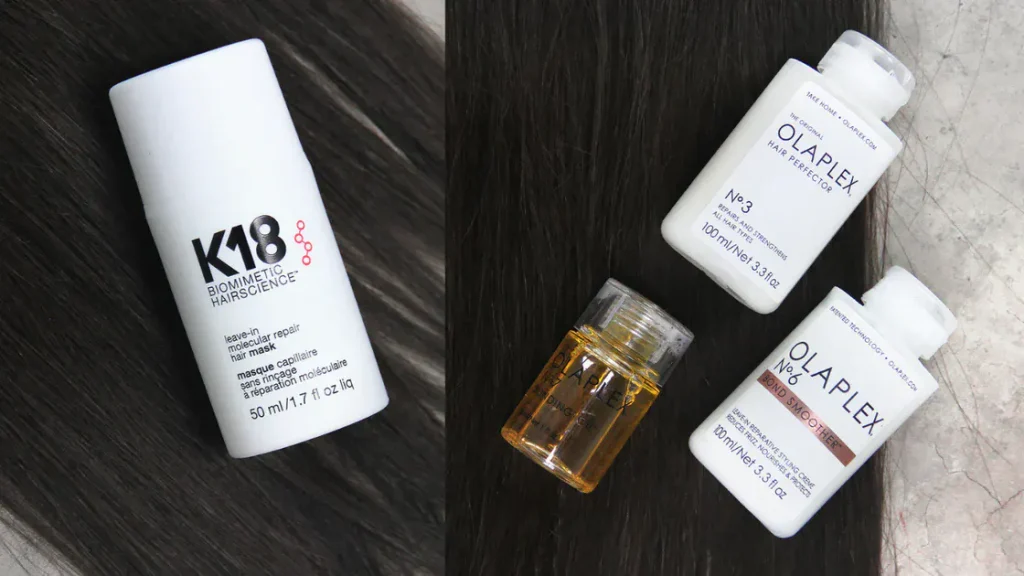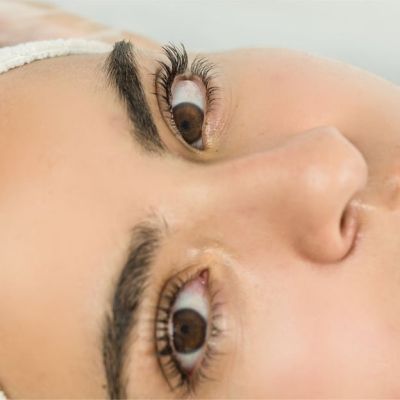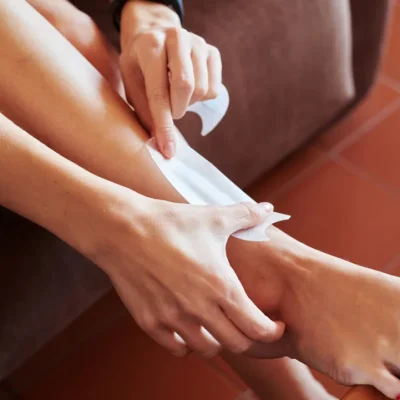When it comes to hair treatments, two names frequently come up: Olaplex and keratin. Both are popular choices for those looking to improve hair health, reduce damage, and enhance shine. However, these treatments serve different purposes and work in distinct ways. In this blog post, Diva Salon helps explore the features, benefits, and potential drawbacks of each treatment to help you make an informed decision.
Understanding Olaplex
Olaplex is a revolutionary hair treatment designed to repair damaged hair at a molecular level. It was initially developed for use in salons but has since become a popular choice for at-home treatments. The key active ingredient in Olaplex is bis-aminopropyl diglycol dimaleate, which works to reconnect broken disulfide bonds in the hair. These bonds can be damaged by chemical processes, heat styling, and environmental factors.
Olaplex is often recommended for individuals who have undergone significant chemical treatments, such as bleaching or perming. Its ability to rebuild the hair’s internal structure makes it a go-to solution for those looking to restore their hair’s integrity. Many users report that their hair feels stronger, softer, and more manageable after using Olaplex.
The Science Behind Keratin Treatments

Keratin treatments, on the other hand, are primarily designed to smooth the hair and reduce frizz. Keratin is a protein that is naturally found in hair, skin, and nails, and it plays a crucial role in maintaining the hair’s structure. Keratin treatments involve applying a keratin-rich solution to the hair, which is then sealed in using heat. This process helps to coat the hair shaft, providing a protective layer that smooths the hair cuticle.
While keratin treatments can help repair some damage, their primary function is to enhance the hair’s appearance by creating a sleek, shiny finish. They are particularly popular among those with curly or frizzy hair who want to achieve a more polished look. The results can last several weeks to months, depending on the specific treatment and hair type.
Keratin treatments work by infusing hair with keratin, a natural protein that strengthens and smooths the hair cuticle, reducing frizz and adding shine. The treatment seals the keratin into the hair using heat, creating a protective barrier that resists humidity and damage. This process not only enhances hair’s appearance but also makes it easier to style and maintain, providing a sleek, manageable finish ideal for hair services.
Benefits of Olaplex
One of the main advantages of Olaplex is its ability to deeply repair damaged hair. Unlike traditional conditioning treatments that provide temporary benefits, Olaplex works on a molecular level to rebuild the hair’s structure. This means that users can expect longer-lasting improvements in hair health.
Olaplex is also versatile; it can be used alongside other chemical treatments without causing additional damage. This makes it an excellent option for those who frequently dye or chemically process their hair. Moreover, the treatment is free from sulfates, parabens, and phthalates, making it a safer choice for those concerned about harmful chemicals.
Additionally, many users find that Olaplex helps to reduce breakage, which can be a significant issue for those with previously damaged hair. The treatment’s ability to improve elasticity and strength means that hair is less prone to splitting and breaking.
Drawbacks of Olaplex
Despite its many benefits, Olaplex is not without drawbacks. One of the main challenges is the cost. Salon treatments can be pricey, and while there are at-home products available, they may not provide the same level of repair as professional treatments. For some, the investment may not be feasible, especially for those with long or thick hair that requires more product.
Additionally, while Olaplex works well for many, it may not deliver dramatic results for everyone. Those with extremely damaged hair may find that they need multiple treatments to see significant improvement. It’s also important to note that Olaplex does not provide the same smoothing effects as keratin treatments, so those primarily seeking frizz reduction may be disappointed.
Advantages of Keratin Treatments
Keratin treatments offer several advantages, particularly for individuals with curly or frizzy hair. The most notable benefit is the immediate smoothing effect. After a keratin treatment, hair tends to be more manageable and easier to style, often reducing blow-dry time significantly. This can be a game changer for busy individuals looking to simplify their hair care routine.
Keratin treatments also provide a protective barrier against environmental factors such as humidity and pollution, which can contribute to frizz and damage. Many users enjoy the sleek and shiny results that last for weeks, making it a preferred choice for special occasions or vacations.
Furthermore, keratin treatments are often perceived as a more straightforward option compared to Olaplex. They typically involve a single salon visit, making them convenient for those who may not have the time or resources for multiple treatments.
Keratin treatments offer several advantages, including smoother, shinier, and more manageable hair by infusing protein into the hair shaft. This treatment reduces frizz, repairs damage, and adds strength, making hair easier to style and maintain. It also helps to cut down on blow-drying time, providing a long-lasting solution for those with curly or unruly hair types. Regular keratin treatments can enhance overall hair health, leaving it looking revitalized and sleek. For the best results, consult a professional cosmetology service to ensure safe and effective application tailored to your hair type.
Disadvantages of Keratin Treatments
While keratin treatments have their benefits, they are not without drawbacks. One major concern is the presence of formaldehyde or formaldehyde-releasing ingredients in some formulations. These chemicals can pose health risks, leading to respiratory issues and other adverse effects. As a result, many individuals are wary of keratin treatments, especially if they have sensitivities to chemicals.
Another drawback is that keratin treatments can lead to a temporary alteration of the hair’s natural texture. While this is often desired, those who enjoy their natural curls may find that they lose some of their hair’s original bounce and volume. The results can also vary significantly based on hair type, with some individuals experiencing better outcomes than others.
Additionally, keratin treatments may require specific aftercare to maintain results, including the use of sulfate-free shampoos. Failure to adhere to these guidelines can result in a shorter lifespan for the treatment.
Comparing the Costs
When it comes to cost, both Olaplex and keratin treatments can be on the higher end of the hair care spectrum. Olaplex treatments in salons typically range from $50 to $150, depending on the length and thickness of the hair. At-home products can add up, especially if multiple applications are needed for optimal results.
Keratin treatments often range from $150 to $500, depending on the salon, the stylist’s expertise, and the specific product used. The initial investment for keratin treatments can be higher, but the results may last longer than those from Olaplex. Ultimately, the choice between the two may depend on your budget and the specific hair issues you want to address.
Hair Type Considerations
The effectiveness of both Olaplex and keratin treatments can vary significantly based on hair type. Olaplex is generally suitable for all hair types, especially those that have undergone chemical treatments or show signs of damage. It can be particularly beneficial for fine or brittle hair, which may be more prone to breakage.
Keratin treatments are often best for individuals with thick, curly, or frizzy hair. Those looking to reduce curl or frizz and achieve a smooth finish will likely find keratin treatments more effective. However, individuals with very fine or straight hair may not see the same benefits and could even find that their hair becomes weighed down or limp after treatment.
When choosing home services, consider how hair type can affect cleaning needs, especially for those with pets or family members with long or curly hair. Homes with high shedding pets or thick, long hair may require specialized vacuum cleaners or more frequent deep cleaning services to maintain a clean environment. Hard-to-clean hair types often necessitate advanced filtration systems or specific tools to prevent clogs and maintain efficiency. Integrating these considerations ensures that cleaning routines are tailored to your home’s unique needs, enhancing overall service effectiveness and satisfaction.
The Role of Aftercare
Aftercare plays a crucial role in the effectiveness of both Olaplex and keratin treatments. For Olaplex, using sulfate-free shampoos and conditioners can help maintain the integrity of the hair and prolong the benefits of the treatment. Regular deep conditioning can also support ongoing repair and moisture retention.
For keratin treatments, adhering to a strict aftercare routine is essential. This often includes avoiding sulfates and sodium chloride in hair products, as these can strip the keratin from the hair and reduce the treatment’s lifespan. Additionally, users should refrain from washing their hair for a few days post-treatment to allow the keratin to fully bond with the hair.
Personal Preferences and Lifestyle
Ultimately, the choice between Olaplex and keratin treatments may come down to personal preference and lifestyle. If you prioritize repairing damage and restoring hair health, Olaplex may be the better choice for you. It offers a long-term solution for individuals looking to strengthen their hair without altering its natural texture.
Conversely, if your primary goal is to achieve sleek, shiny hair with reduced frizz, a keratin treatment may be more suitable. It provides immediate results and can simplify your daily hair care routine. Understanding your specific needs and hair type is crucial in making the right choice.
Personal preferences and lifestyle significantly influence how individuals choose to express themselves, including through makeup. Factors such as daily routines, social activities, and personal style play a crucial role in selecting makeup looks that align with one’s identity. For those seeking to enhance their appearance, professional makeup services can provide tailored solutions that cater to specific tastes and occasions. Whether it’s for a special event or everyday wear, a makeup artist can help individuals showcase their unique beauty while respecting their lifestyle choices.
FAQs
Which hair treatment is better than keratin?
However, there are a few factors about Cysteine hair treatment that can make the case for it: It does not use any harmful chemicals, making the treatment safer for everyone, especially pregnant women. It is gentler in term of application when compared to other treatment procedures, including Keratin hair treatment.
Is keratin treatment better than Olaplex?
The main difference between K18 vs Olaplex is that K18 repairs both the keratin chains and sulphur bonds in the hair, while Olaplex repairs only the sulphur bonds. This means K18 is a more complete and durable treatment, renewing the hair from the inside out, rather than just repairing it on the surface.
Does Olaplex have protein or keratin?
As we mentioned, both K18 and Olaplex contain keratin which is a protein our bodies make naturally. Too much keratin can start to do the opposite of leaving your hair healthy and shiny and start to make it brittle and fragile due to over stimulation from the keratin protein.
What is the safest hair treatment?
Chemical sensitivity: Keratin straightening treatments involve chemicals. Therefore, discuss chemical sensitivity with your stylist beforehand and opt for a gentle formula if needed. Nanoplatia and Taninoplastia are one of the safest treatments.
Does Olaplex straighten hair permanently?
Olaplex Treatment doesn’t permanently repair hair, but it significantly improves its strength and health. It’s a bond-building treatment that helps reconnect broken disulfide bonds in the hair, which can be damaged by chemical treatments or heat styling.
Conclusion
In the battle of Olaplex vs. keratin, there is no one-size-fits-all answer. Each treatment offers unique benefits and is tailored to different hair concerns. Olaplex is ideal for those seeking to repair and strengthen damaged hair, while keratin treatments excel in providing smoothness and manageability. Before making a decision, consider your hair type, desired results, and budget. Consulting with a professional stylist can also provide valuable insights tailored to your specific hair needs. Regardless of your choice, both treatments can lead to healthier, more beautiful hair when used appropriately.




